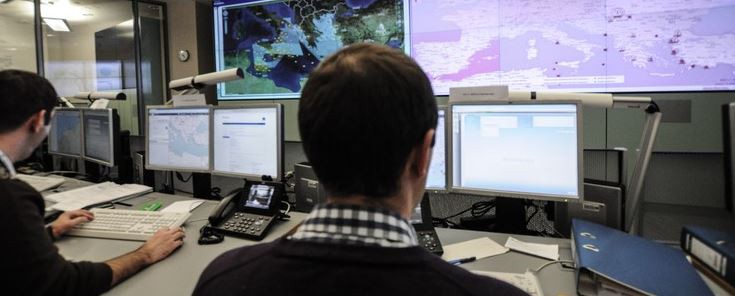The EU's long-awaited pan-European surveillance system, Eurosur, went live on December 2, 2013. In the first phase of implementation, 19 Schengen countries having external land or sea borders adopted the system. The remaining 12 participating states will join the network by December 1, 2014. The first of these will be Croatia, the newest member state and the one with the longest land borders, scheduled for inclusion by the end of March.
News
Eurosur goes live
2014-01-20

The network expansion, which is going to schedule with all members participating actively, is the tip of the iceberg however. The network itself is the most visible part of Eurosur, and forms the interface between Europe's border authorities and Frontex. But Eurosur's real value lies in its supporting infrastructure, and much remains to be done behind the scenes.
Before joining Eurosur, each member of the network must first create a National Coordination Centre (NCC) — often described as the system's backbone — made up of that country’s border-control authorities and allied services. Each NCC is responsible for compiling all relevant data, analysing and interpreting it, deciding what to share and with whom and, perhaps most importantly, creating a coherent national picture for that member state.
In addition to adding data from the joint operations it coordinates, Frontex is also responsible for enriching the overall picture with additional information to enhance the system's usability. These include an interactive weather service with live coverage and forecasts and other environmental information such as maritime conditions and commercial sea traffic, through cooperation with other EU agencies.
One of the key elements of Eurosur is that borders are divided into sections and classified by 'impact level' or the degree of risk associated with that section in terms of irregular migration, smuggling of goods and other cross-border crime.
Identifying and classifying these border sections is another of Frontex's tasks. But while the border sections themselves are determined by individual member states, Frontex monitors current and historical data from the EU’s external borders, adjacent border areas and third countries to identify trends and create projections.
Together with the member states concerned, these factors are then used to create an impact level — low, medium or high — for each border section.
A European Picture
An important Frontex role, as one of the network's members, is to compile all the member states’ situational data and create a European Situational Picture. This is presented in three layers: events, operational, and analytical. The events layer tells users what is happening in terms of refusals of entry, detection of stolen vehicles, smuggling of goods, smuggling of people, human trafficking and any other events related to border control, including the detection of migrant boats at sea.
The operational layer includes information such as ongoing operations at the external borders, be they national, multi-national or Frontex-coordinated joint operations. This layer may include data on the type and number of technical assets deployed, number and profile of officers and periodic results, although the precise data that is shared, and with whom, remains at the discretion of individual NCCs.
The analysis layer is a work in progress and under constant review. Risk-analysis products and services including updates on routes, operational intelligence about people-smuggling networks and new modi operandi, as well as key developments in third countries, can all be added by Frontex to give a more rounded view of the overall picture of the current border situation. However, that view will only ever be as good as the information fed into the system. How it is used, and what its future benefits will be, depend on the system’s users, not on the system itself.